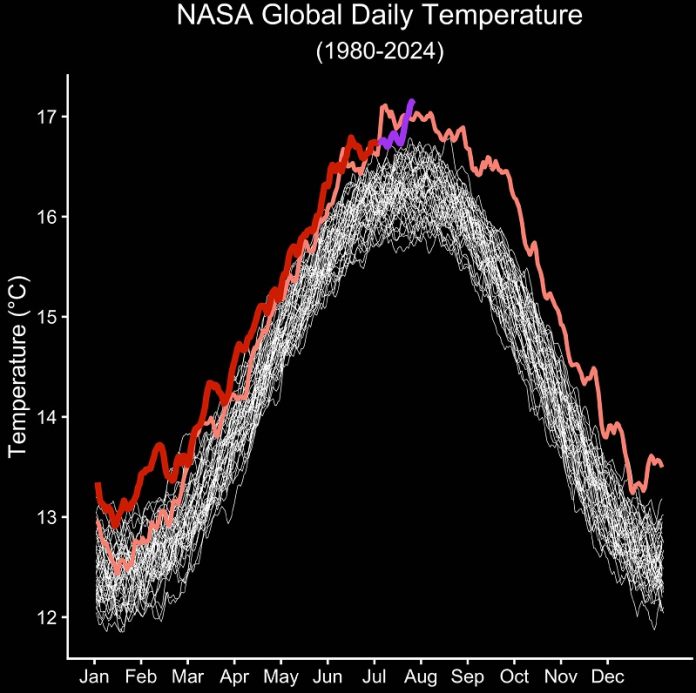
NASA has reported that July 22, 2024, was the hottest day ever recorded on Earth.
This finding comes from NASA’s analysis of global temperature data, which also showed that July 21 and 23, 2024, surpassed the previous daily heat record set in July 2023.
These extreme temperatures are part of a long-term warming trend caused by human activities, mainly the emission of greenhouse gases.
NASA Administrator Bill Nelson commented on the situation, stating, “In a year that has been the hottest on record to date, these past two weeks have been particularly brutal.
Through our over two dozen Earth-observing satellites and over 60 years of data, NASA is providing critical analyses of how our planet is changing and how local communities can prepare, adapt, and stay safe.
We are proud to be part of the Biden-Harris Administration efforts to protect communities from extreme heat.”
The data behind these findings come from NASA’s Modern-Era Retrospective analysis for Research and Applications, Version 2 (MERRA-2), and the Goddard Earth Observing System Forward Processing (GEOS-FP) systems.
These systems combine millions of observations from instruments on land, sea, air, and satellites, using atmospheric models to provide a comprehensive view of global temperatures.
The GEOS-FP system offers near-real-time weather data, while the MERRA-2 reanalysis ensures high-quality observations, though it takes longer to process.
Daily global average temperature values from MERRA-2 for the years 1980-2022 are shown in white, 2023 values are shown in pink, and 2024 values through June are shown in red.
The daily global temperatures from July 1 to 23, 2024, from GEOS-FP are shown in purple.
These findings align with an independent analysis from the European Union’s Copernicus Earth Observation Programme. While there are small differences between the analyses, both show a clear increase in temperatures over time and identify the hottest days.
NASA scientists from the Goddard Institute for Space Studies in New York noted that the recent daily temperature records follow 13 consecutive months of record-breaking monthly temperatures.
Their analysis is based on the GISTEMP record, which uses surface instrumental data to provide a long-term view of global temperature changes, dating back to the late 19th century.
This new data highlights the urgent need for action to address climate change. With the Earth’s temperature continuing to rise, it is crucial for communities worldwide to prepare for and adapt to these extreme conditions.
NASA’s ongoing efforts to monitor and analyze Earth’s changing climate are essential in helping to understand and mitigate the impacts of global warming.



